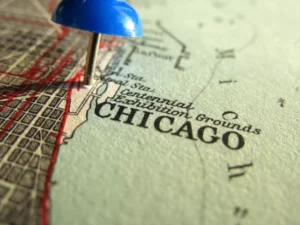Content

Remember, the bouncy castle costs $10,000 and has a salvage value of $500, so its book value is $9,500. Since hours can count as units, let’s stick with the bouncy castle example. Even if you defer all things depreciation to your accountant, brush up on the basics and make sure you’re leveraging depreciation to the max. Fixed Assets are treated as long-term assets and reported under the assets in the Statement of Financial Position.
In this post, the meaning of depreciation will be explained to you in simple language using a simple example – that of a banana. Depreciation expenses are also an advantage for the company from a tax point of view. As per IAS 16, the depreciable amount is equal to the purchase cost of the asset, less the salvage value or other amount like the revaluation amount of the asset. Generally, if you’re depreciating property you placed in service before 1987, you must use the Accelerated Cost Recovery System (ACRS) or the same method you used in the past.
Accumulated Depreciation and Book Value
To calculate composite depreciation rate, divide depreciation per year by total historical cost. To calculate depreciation expense, multiply the result by the same total historical cost. The result, not surprisingly, will equal the total depreciation per year again. Cost generally is the amount paid for the asset, including all costs related to acquiring and bringing the asset into use.[7] In some countries or for some purposes, salvage value may be ignored. The rules of some countries specify lives and methods to be used for particular types of assets. However, in most countries the life is based on business experience, and the method may be chosen from one of several acceptable methods.
What is depreciation in simple words?
Depreciation represents the estimated reduction in value of a fixed assets within a fiscal year. Tangible assets, such as buildings, equipment, vehicles and so on, are purchased in large lump sums.
The methods used to calculate depreciation include straight line, declining balance, sum-of-the-years’ digits, and units of production. The accumulated depreciation account is a contra asset account on a company’s balance sheet. It appears as a reduction https://www.bookstime.com/articles/depreciation-expense from the gross amount of fixed assets reported. Accumulated depreciation specifies the total amount of an asset’s wear to date in the asset’s useful life. The depreciation expense appears on the income statement like any other expense.
Boundless Accounting
Depreciation stops when book value is equal to the scrap value of the asset. In the end, the sum of accumulated depreciation and scrap value equals the original cost. The table below illustrates the units-of-production depreciation schedule of the asset. Suppose an asset has original cost $70,000, salvage value $10,000, and is expected to produce 6,000 units. It’s assumed that the machinery will remain useful for 5 years after which it could be reasonably sold for $80,000.
- Working closely with a certified public accountant while you compile financial records and books of account is essential for ensuring accurate reporting.
- The accounting definition of depreciation is often one that confuses a lot of people.
- If you can determine what you paid for the land versus what you paid for the building, you can simply depreciate the building portion of your purchase price.
- Depletion and amortization are similar concepts for natural resources (including oil) and intangible assets, respectively.
- Rules vary highly by country, and may vary within a country based on the type of asset or type of taxpayer.
To help you get a sense of the depreciation rates for each method, and how they compare, let’s use the bouncy castle and create a 10-year depreciation schedule. Learn more about this method with the units of depreciation calculator. So, even though you wrote off $2,000 in the first year, by the second year, you’re only writing off $1,600. In the final year of depreciating the bouncy castle, you’ll write off just $268.
Depreciation Expense Calculation
At the same time, it is a reduction in the value of the particular asset upon which depreciation has been charged. In other words, the decline in the value of the asset by way of depreciation results directly from its use in the process of generating revenue. This post is to be used for informational purposes only and does not constitute legal, business, or tax advice.

To get a better sense of how this type of depreciation works, you can play around with this double-declining calculator. Many depreciation methods allow by IFRS, but IFRS recommends the three methods mentioned in IAS 16. The assets normally treated as Fixed Assets are an office building or building belonging https://www.bookstime.com/ to the entity, land belonging to the entity, computer equipment, entity care, and others. If it’s been used, it has lost some of its value (that is, you’re unlikely to get as much money if you sold it now) and therefore, you need to record this as an expense because it has cost your business money.
Why Are Assets Depreciated Over Time?
The simplest way to calculate this expense is to use the straight-line method. The formula for this is (cost of asset minus salvage value) divided by useful life. Find the method that makes sense for your business’s assets (possibly with the assistance of an accountant) and make sure you are taking full advantage of this tax break.
This accumulation expense reduces the book value of property, plant, and equipment at the end of the charging period. If your financial statements are prepared based on IFRS, IAS 16 Property, Plant, and Equipment are the standard for dealing with depreciation. They should be charged as expenses in the period they are used and based on how they are used. The accounting definition of depreciation is often one that confuses a lot of people.
We assist small businesses in recording and tracking expenses efficiently. Depreciation cannot be charged on assets that are low in cost for the company. They can also not charge depreciation on assets that will be consumed within one accounting period of their purchase.
Next, divide the depreciable base (170,000) by the machinery’s useful life (5years) to determine that $34,000 may be recorded as depreciation expense each of the five years the equipment is in use. Here, the building can be depreciated but the land cannot as it is considered to be perpetually useful. As time passes and it is used for deliveries, the van’s components become worn and dated which slowly depletes the functionality of the van and hence, its value. The longer the van is in use the more it will physically deteriorate and its value depreciate. This is the type of depreciation that is used in accounting to justify the depreciation expense. When a long-term asset is purchased, it should be capitalized instead of being expensed in the accounting period it is purchased in.

